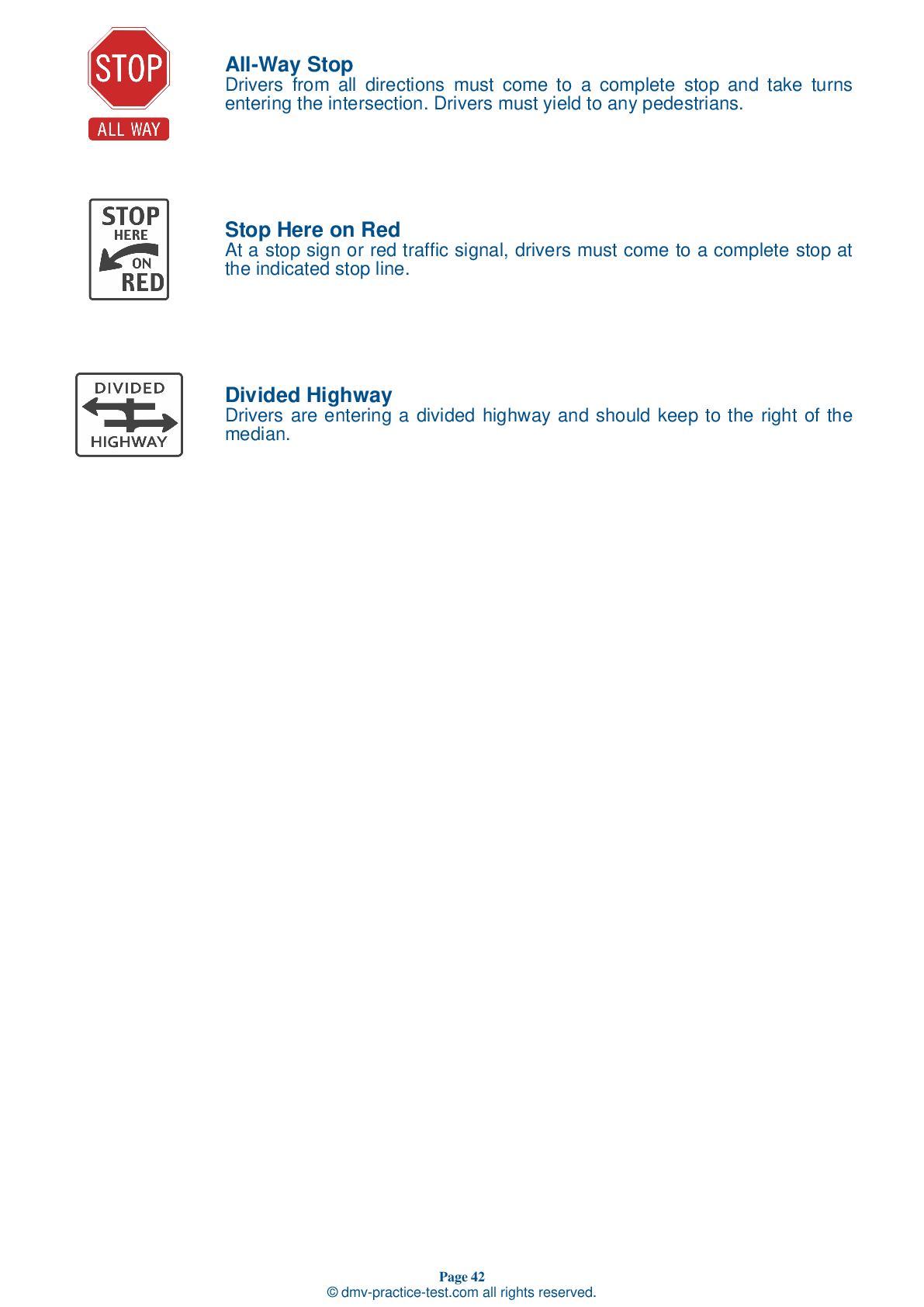Motorcycle Test | License MN 2025 | FREE Online Practice! #9 Page 2 of 5
Take this FREE motorcycle test (license in MN 2025) to check your knowledge of the road rules. To improve your results, download a motorcycle handbook online, study theory, and practice for free on our website. Still worried about how to get a motorcycle license in Minnesota in 2025? Check our website for more sample tests, train as much as possible, and boost your grades!
9 . When riding a motorcycle, you should:
While riding a motorcycle, you should be wearing pants and a jacket made from durable materials, completely covering your arms and legs. Any exposed skin is at risk, should you be involved in an accident.
10 . When a lead rider extends their left arm straight out with their palm facing down before swinging their arm downward, it means:
Hand signals are an important part of communication when riding in groups. When the lead rider extends their left arm straight out with their palm facing down before swinging their arm downward, it means riders should slow down.
11 . If you began a curve on the outside and no traffic is present when you are exiting the curve, you should move:
If no traffic is present when you are taking a curve, start on the outside of the curve to increase your line of sight and the effective radius of the turn. As you turn, move toward the inside of the curve. As you pass the center of the curve and prepare to exit, move back toward the outside position. Remain aware of changing road and traffic conditions and adjust as necessary.
12 . This road sign means:

This is a speed limit sign. It indicates the maximum legal speed that you may drive on the road where it is posted. At times of rain, snow, ice, or other less-than-ideal conditions, you may have to drive more slowly than the posted limit.
13 . When riding a motorcycle:
For your protection when riding, you should wear boots or shoes that are high and sturdy enough to cover and support your ankles. Heels should be short so that they do not catch on rough surfaces.
14 . When approaching an object or uneven surface that you cannot avoid, you should:
If you cannot avoid riding over an obstacle or uneven surface, you should approach it at as close to a 90-degree angle as possible. Slow down as much as you can, make sure that your motorcycle is upright, and rise slightly off your seat so your knees can absorb some of the force of impact. Just before contact, roll on the throttle slightly to lighten the front end.
15 . Where is the horn button usually located?
Make sure that you are aware of the locations of all your motorcycle's controls before beginning to ride. The horn button on a motorcycle is usually located next to the left handgrip.
16 . If braking in a curve:
It is possible to use both brakes while turning, but it must be done with great care. Some of the tires' usual traction is being used to make the turn while the motorcycle is leaning, so less traction is available for stopping.
See the exact questions that will be on the 2025 Minnesota DMV exam.
99.2% of people who use the cheat sheet pass the FIRST TIME
Jeneen was tired of paying $5/gallon. She got herself a scooter that required the motorcycle license. She studyed the motorcycle test cheat sheet and passed her test the next day!
Christopher tells us how he knew nothing prior to obtaining the motorcycle study guide, and he only got one question wrong because he clicked on the wrong answer by mistake.



